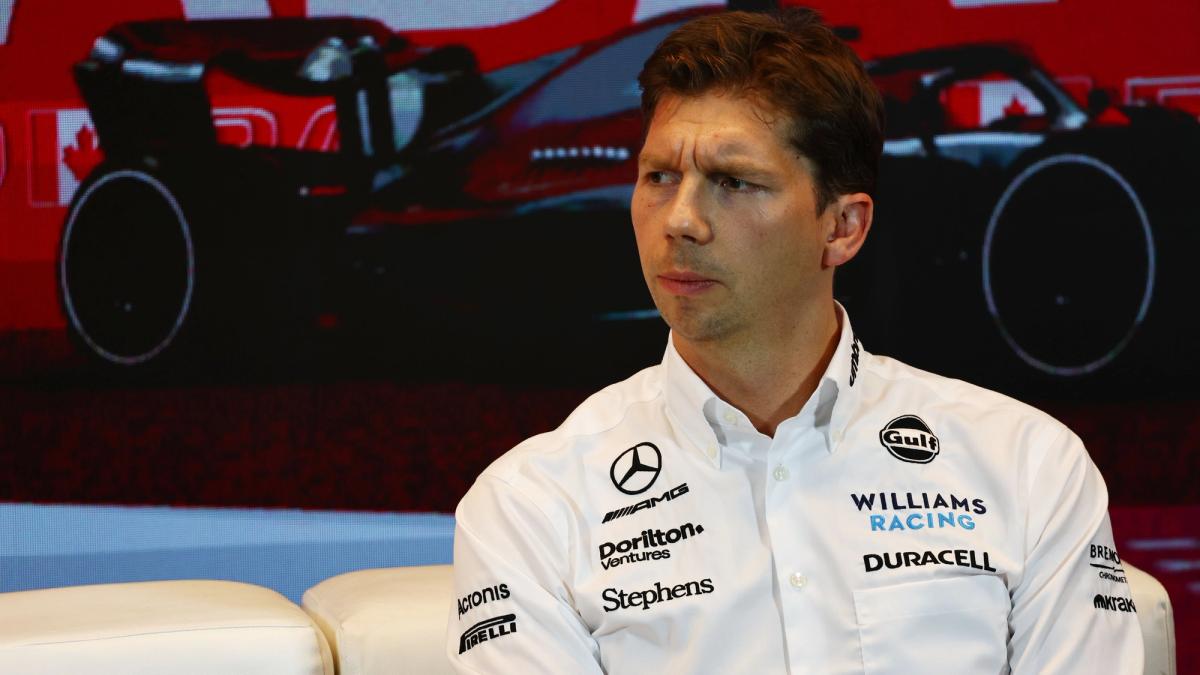Williams Racing Team Principal James Vowles was on the sofa at the FIA’s pre-race press conference alongside Otmar Szafnauer (Alpine) and Andrea Stella (McLaren) on Friday afternoon.
Speaking shortly after the truncated FP1 of the 2023 Canadian Grand Prix, James answered questions from the media on a wide range of topics. Here’s a summary of what JV had to say.
On the upgrades to Alex’s car
I think if you compare Bahrain, for example, to Barcelona and Monaco, in Bahrain, in the early races, if we got absolutely everything right, there was an opportunity to score points and it became abundantly evident as the races ticked on and our competitors did update their cars, we fell back against that.
And by the time we got to Barcelona, we're now out, pretty firmly, in Q1. And the attention on the upgrades has put us back in a position where we can, if we do a good job on Saturday and Sunday, walk away with a point and start fighting our way back up the championship.
Make it yours
Customise your very-own Driver Card! Pick your own helmet and number to display your Williams Racing fandom to the world!
On his recent comments regarding Williams Racing’s infrastructure and the challenges of the cost cap
So, 20 years of underinvestment is why we are where we are today. But I'm in a fortunate position that my predecessors weren't – where we have investment, significant investment, behind us.
There is a strong desire to have Williams Racing return to a competitive position. But to do that requires investment, so the money's available and ready.
The cost cap itself is split into two things. There's an operational cost cap, which is about $145 million, which everyone knows and talks about.
Perhaps more hidden than that is a CapEx, a capital expenditure version of the cost cap. It's a bit complicated, but roundabout $36m spread across four years, every year you can spend $6m or $7m of that if you just do it fairly equally.
That's good in as much as it's restricted spending. But in many regards, where we are today, that money is disappearing on what I think is basic infrastructure.
So if I take an example of things that were in Williams, and this is being very transparent about it, when a designer releases a part, it sort of goes into a black hole.
Normally, that would go into a digital system that can be tracked, so you understand actually, what the car gets made up of.
And bear in mind, there are 17,000 components and by the time you have designers doing this 17,000 times, you get lost.
So you have inefficiencies. To fix that software isn't, unfortunately, hundreds of pounds, but that's millions, and even up to 10s of millions if you get it right.
So, CapEx for me, at the moment, my expenditure was more spent on trying to get some infrastructure in place, so at least we know how long it takes to design space. It's all publicly available.
But if you go look at Companies House, you can sort of see that the numbers we're talking about here is hundreds of millions, not $10m, or $20m, but hundreds of millions to catch up with the level of investment, from where Williams is today, to perhaps the most extreme expenditures you see in the sport.
That's a big deficit. Formula 1, the FIA and other teams have been supportive of this. What we're looking for at the moment is the ability to have sporting equity, the ability to have infrastructure that matches our peers, such that we're not fighting with one hand behind our back.
Final Round
Voting has ended
On the team spirit he found at the team despite these difficult years
Team spirit was high, given that they had gone through what I think was an incredibly difficult winter when there was a large change at all management levels.
But the morale was high and the build that they did, without much structure around it, was very impressive.
I've quoted it before in the media, but 17,000 components coming together, and the thing has four wheels pointing the right way is impressive.
There's definitely a sentiment now, I've described it as you can see people's heads are held high, the shoulders are up, and they can see a direction of travel for how we're going to pull ourselves out of this, which is not the same as going round in a circle.
The best way to describe it is that the team was in survival mode, where it was thinking about what we needed to do to get ready for the next race.
That's not how Formula 1 works anymore. What you're thinking about now, already, is 2024, 2025 and 2026. And if you're not thinking that far ahead, you're going to fall behind against competitors that are.
And that cultural change will take quite a while to properly kick in because it's very different. You're now not thinking about the carbon bits appearing in Montreal, but you're thinking about what you want the car to look like in two years.
And I think that's the direction of travel that's helped everyone understand how we are going to pull ourselves out of the performance region we are in today.
Save 50% on our Canada range
See More
On the key things that he’d like in place over the next couple of seasons
I think the key one is the one I brought up. If you don't have a digital infrastructure, where you know where a part is, how long it takes, how many parts you need, and what an assembly is built up of, you are lost from the beginning.
I think that's an accolade to what Williams was because you need a huge amount of teamwork to understand what you're doing with this.
I would describe it as human glue, but very good human glue. And that's what was in place. And that infrastructure will really make a difference.
Because just understanding how long it would take to produce something could be a tremendous improvement over where we are today. And also means you can start planning properly in the future for your updates.
Over the next few seasons, what's very clear is that our competitors are bringing tremendous amounts of performance to the car quicker than we're bringing it to the car.
We have to address that and improve that. And very clearly as well, the car has some characteristics where it works well at some tracks, this [Canada] will be one of them, and at others, it's quite poor.
We've got to start addressing that through some base fundamentals. I would say all areas of the organisation have targets for how we're going to improve and all will deliver performance if we can get them right.
The importance of building the right culture
I think there's an expression, it's not mine, that culture eats strategy for breakfast and I completely buy into that.
You can have as many strategies as you want but your culture is actually what dominates the drumbeat of the organisation, and your culture is everything.
Openness, communication and teamwork are all cultures I strongly believe in. They don't appear overnight, just because I say this is the culture I'd like.
Culture comes from your organisation. All you can do is mimic behaviours that you want out of it and reward your lieutenants that effectively follow the guise of where you want to go.
But culture is everything. If you look at what we have, fundamentally up and down the grid, each team has between 800 to 1,000 incredibly intelligent individuals working day and night to produce a car that moves forward.
Now you need to start finding your differentiators and your differentiators come from just those that are slightly better at talking, communicating and working together. And that's what culture drives.
Mexico City 2025
Pit Wall Predictions
The prediction window for this Grand Prix has now closed.
Related Tags:
Powered By
© the Williams Group, under licence to Williams IP Holdings LLC
Powered By
Williams Grand Prix Engineering Services LLP, a limited liability partnership registered in England and Wales with company registration number OC456938 and whose registered address is at Station Road, Grove, Wantage, Oxfordshire, OX12 0DQ.




